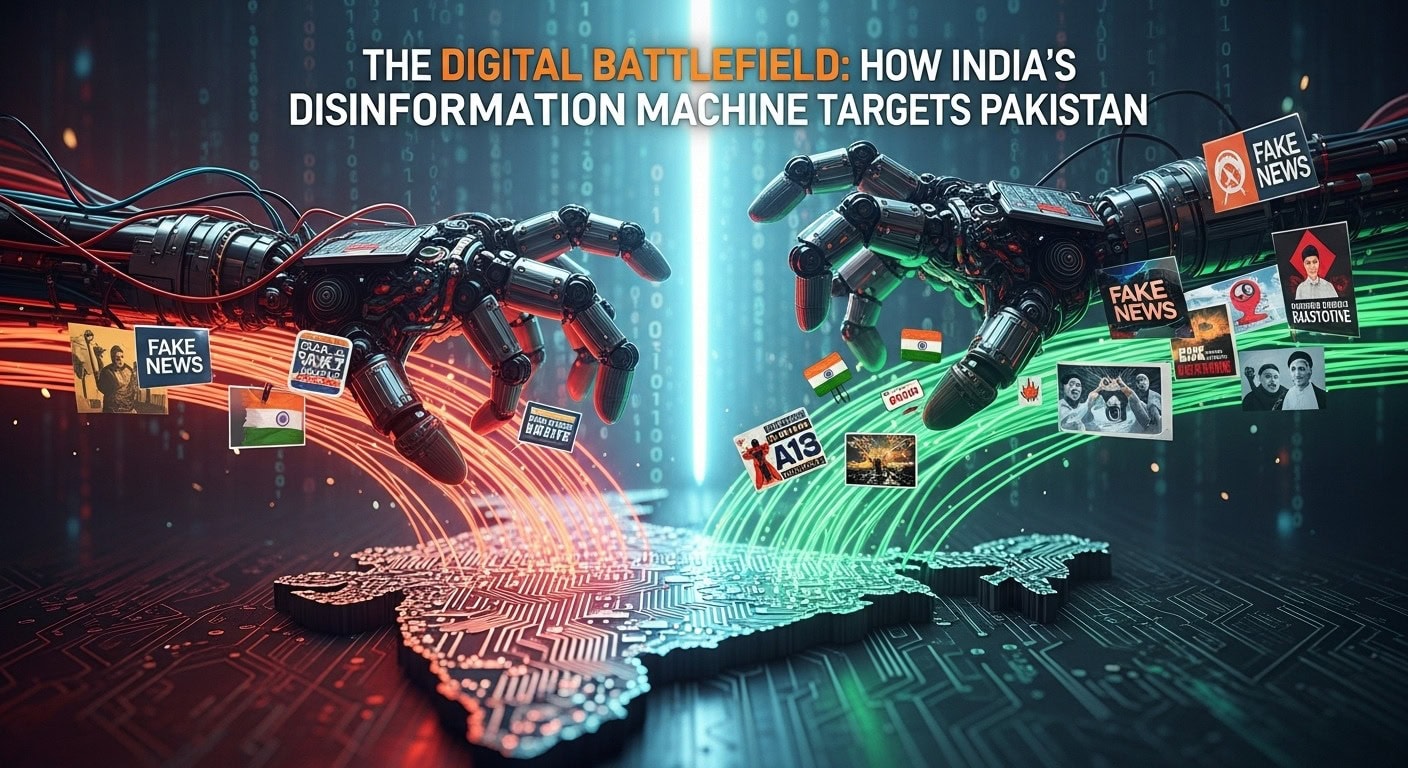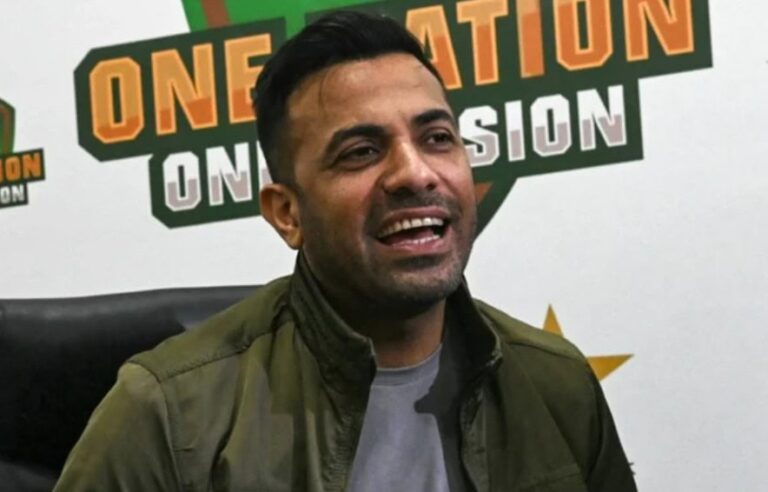
In the digital age, rumors sprint while the truth limps behind. It starts with a ping — a WhatsApp forward warning of a “blast at Karachi Airport,” or a tweet screaming about a “civil war in Balochistan.” Within moments, it’s everywhere — on Facebook timelines, Telegram groups, and family chats. Only later, when someone bothers to check, does the illusion crumble. The footage was never from Pakistan at all. It came from Yemen, or maybe Syria, years ago — stitched together with fresh captions and a familiar intent: to mislead, to divide, to stir fear.
This isn’t random rumor. It’s a coordinated campaign of disinformation, meticulously engineered to sow panic and damage Pakistan’s credibility. The digital battlefield between India and Pakistan has become one of perception, where misinformation serves as a modern weapon of influence.
The Roots of a Digital Conflict
The information war between India and Pakistan is as old as the partition of 1947. What began with state-controlled radio propaganda evolved through television and now social media. From Kargil to Balakot, each conflict brought with it a flood of digital manipulation, memes, and doctored news designed to claim narrative superiority.
But the scale of these operations is unprecedented. The EU DisinfoLab’s “Indian Chronicles” investigation uncovered over 750 fake media outlets across 116 countries, many linked to networks like the Srivastava Group. These networks didn’t just spread false stories — they built entire fake ecosystems: imitation news portals, fabricated NGOs, and even bogus human rights organizations. Each piece of content was designed to look credible, giving anti-Pakistan propaganda an air of legitimacy and shaping international perception in a deliberate and coordinated way.
The Anatomy of Deception
The playbook is disturbingly efficient. A rumor begins on anonymous accounts or fringe outlets. Doctored visuals lend credibility. Bots and fake profiles amplify it under hashtags like #CivilWarinPak. Within hours, mainstream Indian TV channels — Times Now, Zee News, Aaj Tak — pick it up as “breaking news.” By the time Pakistan’s authorities respond, the lie has already circled the globe.
New tools make this even harder to combat. AI-generated videos and deepfake images blur the line between truth and fiction, creating believable false realities that can inflame tensions or discredit institutions.
Exposing the Lies: Documented Fake News
Pakistan’s media watchdogs have repeatedly exposed coordinated campaigns designed to destabilize its image. Among the most notorious examples:
“Civil War in Balochistan” Hoax – Footage from Syria’s civil war passed off as Pakistani unrest.
Fake Karachi Airport Explosion – 2015 Yemen explosion reused to fabricate a terror attack.
“Military Coup in Islamabad” Rumor – Counterfeit TV tickers claimed army takeover; ISPR confirmed it was false.
Lahore Under “Missile Attack” – Game footage from ARMA 3 mislabeled as Indian airstrikes.
“Pakistan Defaults, IMF Walks Out” – IMF’s site disproved claims of blacklisting or default.
Fake PAF Jet Crash in Punjab (2024) – A 2019 U.S. airshow accident repurposed with new captions.
Each case was swiftly debunked by the Ministry of Information and Broadcasting, ISPR, or MOFA — yet the viral reach of these lies shows how difficult it is to put truth back into circulation once disinformation spreads.
Pakistan’s Counter-Offensive
Islamabad has ramped up institutional defenses. The Ministry of Information runs the “Fact Checker MoIB” initiative and a proposed Digital Media Protection Authority to counter false narratives. The Ministry of Foreign Affairs leads efforts at the UN and UNESCO to regulate online disinformation, while ISPR invests in advanced monitoring and cyber defense.
Independent organizations like Soch Fact Check, Geo Fact Check, and Digital Rights Foundation play crucial roles in independently verifying viral claims and educating the public.
However, the challenge cuts both ways. Critics note that credibility also depends on transparency and consistency — meaning fact-checking must remain professional and apolitical. In this new era, every actor, state or private, is under scrutiny.
The Citizen’s Shield: Media Literacy
In the information age, skepticism is self-defense. A digitally literate citizen can disarm propaganda faster than any algorithm. The rule is simple: If it doesn’t come from verified government or credible media sources, treat it as unverified — or hostile.
Checklist for citizens:
Before sharing or believing any news, always check the source to ensure it’s an official channel or a trusted fact-checker. Don’t rely on headlines alone, as they are often sensationalized to grab attention. Verify images and videos using tools like Google Images or TinEye to confirm their origin, and be alert to content that provokes strong emotions — anger or fear is often a red flag. Finally, cross-check the information with multiple credible outlets to make sure it’s accurate before accepting or sharing it.
AI deepfakes demand even sharper vigilance. From fake videos of officials to synthetic “news anchors,” these tools are rewriting the boundaries of deception.
The Future of Digital Warfare
The digital confrontation between India and Pakistan will only intensify. As technology evolves, so will psychological operations and AI-driven propaganda. The goal for both nations — and indeed the global community — should be to safeguard truth as a shared value, not a partisan weapon.
Ultimately, this battle isn’t about data; it’s about trust. Truth is no longer a passive ideal — it’s a strategic defense. In this asymmetric war, Pakistan’s most powerful weapon is not censorship or counter-propaganda, but transparency, speed, and digital literacy.
In the end, disinformation doesn’t just distort headlines. It corrodes democracy, destabilizes societies, and turns the internet — once meant to connect humanity — into a weapon of division. The first step to winning this war is simple: don’t be its soldier






